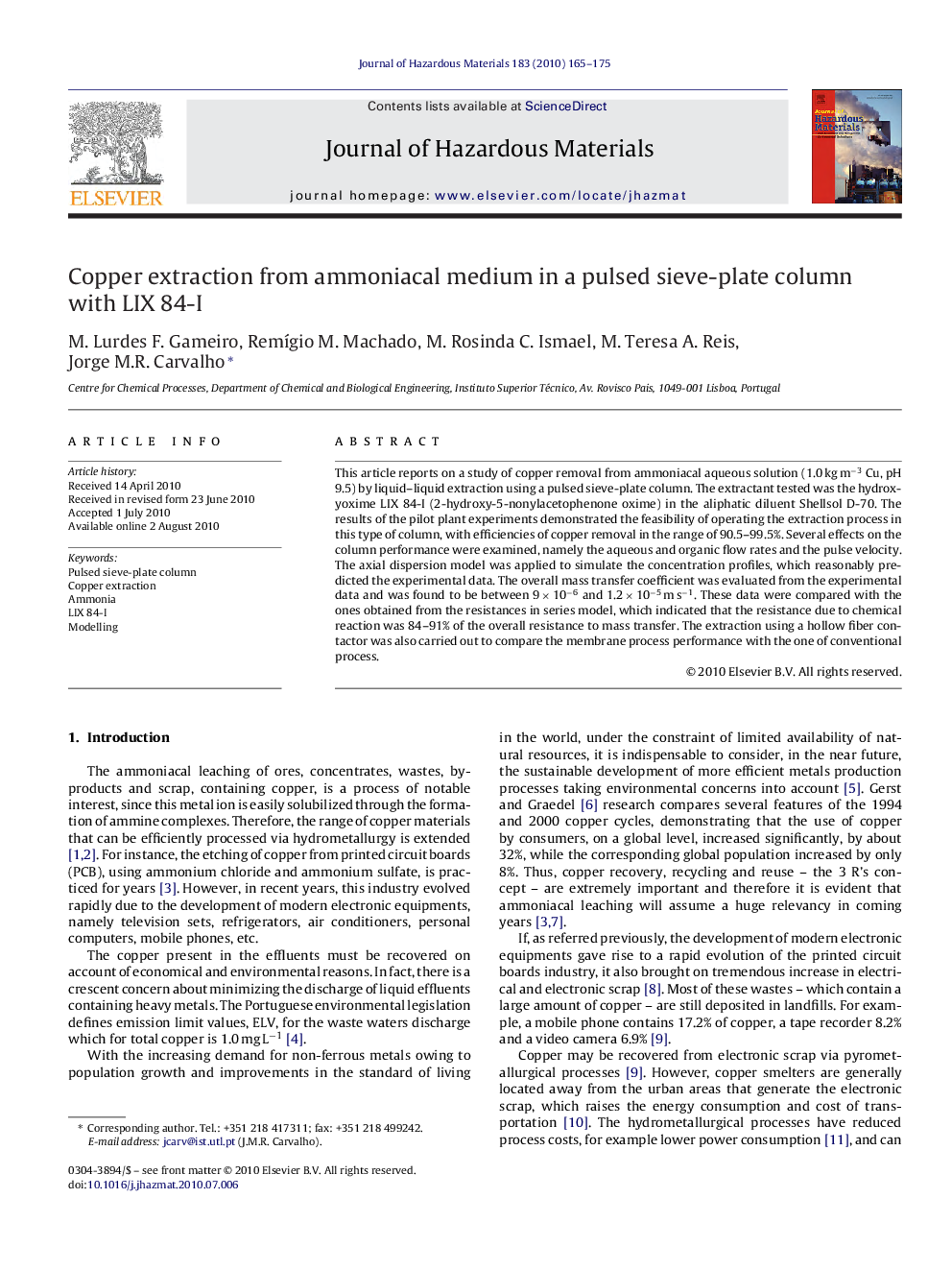| Article ID | Journal | Published Year | Pages | File Type |
|---|---|---|---|---|
| 579512 | Journal of Hazardous Materials | 2010 | 11 Pages |
Abstract
This article reports on a study of copper removal from ammoniacal aqueous solution (1.0 kg mâ3 Cu, pH 9.5) by liquid-liquid extraction using a pulsed sieve-plate column. The extractant tested was the hydroxyoxime LIX 84-I (2-hydroxy-5-nonylacetophenone oxime) in the aliphatic diluent Shellsol D-70. The results of the pilot plant experiments demonstrated the feasibility of operating the extraction process in this type of column, with efficiencies of copper removal in the range of 90.5-99.5%. Several effects on the column performance were examined, namely the aqueous and organic flow rates and the pulse velocity. The axial dispersion model was applied to simulate the concentration profiles, which reasonably predicted the experimental data. The overall mass transfer coefficient was evaluated from the experimental data and was found to be between 9 Ã 10â6 and 1.2 Ã 10â5 m sâ1. These data were compared with the ones obtained from the resistances in series model, which indicated that the resistance due to chemical reaction was 84-91% of the overall resistance to mass transfer. The extraction using a hollow fiber contactor was also carried out to compare the membrane process performance with the one of conventional process.
Keywords
Related Topics
Physical Sciences and Engineering
Chemical Engineering
Chemical Health and Safety
Authors
M. Lurdes F. Gameiro, RemÃgio M. Machado, M. Rosinda C. Ismael, M. Teresa A. Reis, Jorge M.R. Carvalho,
